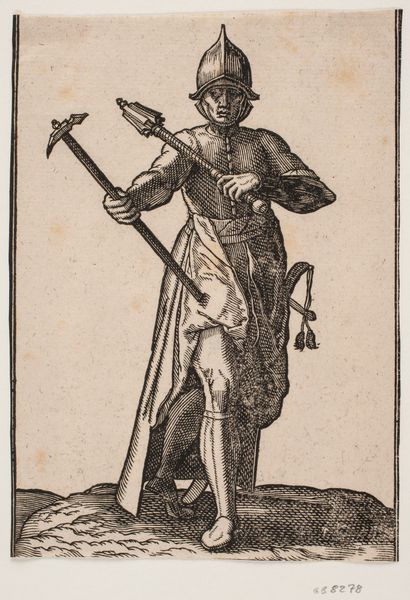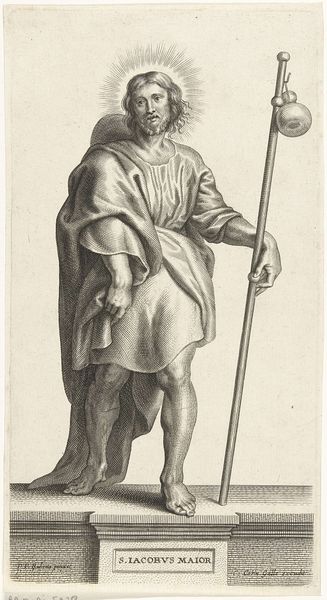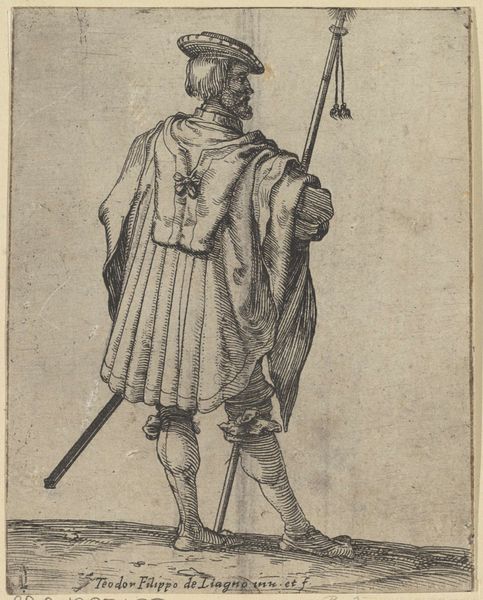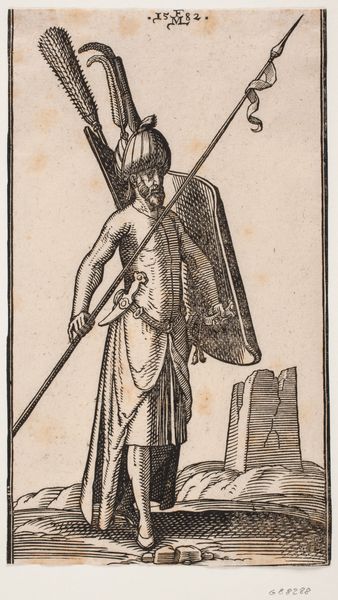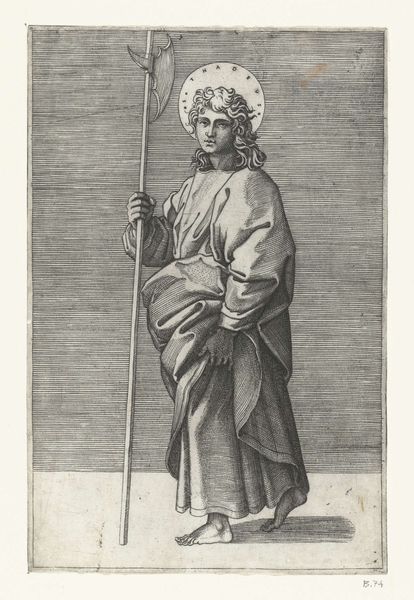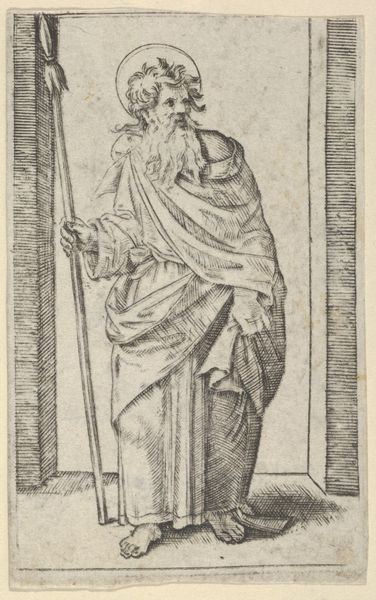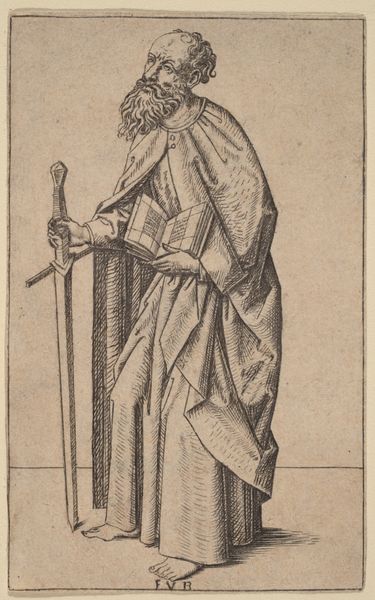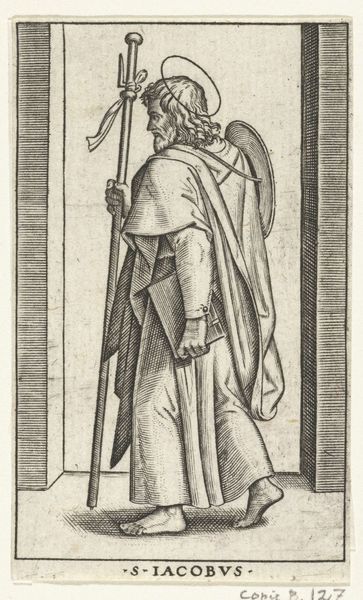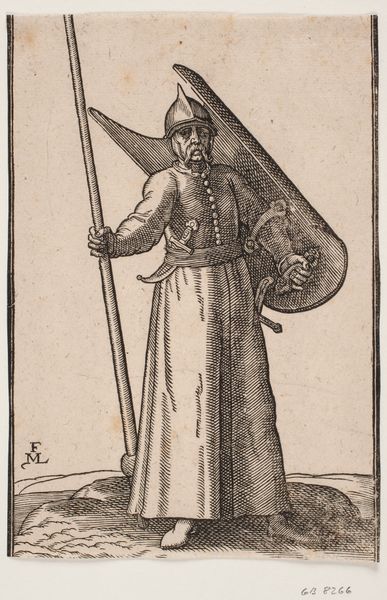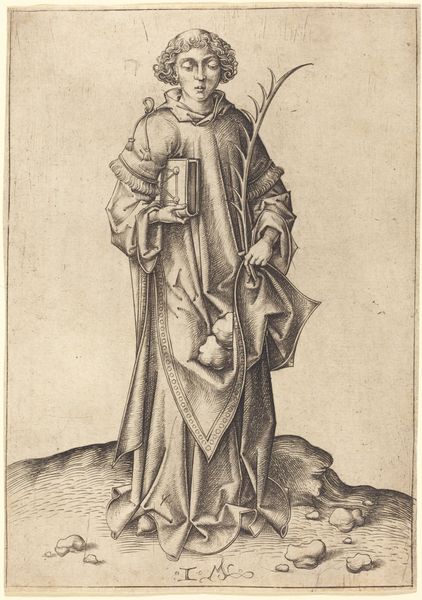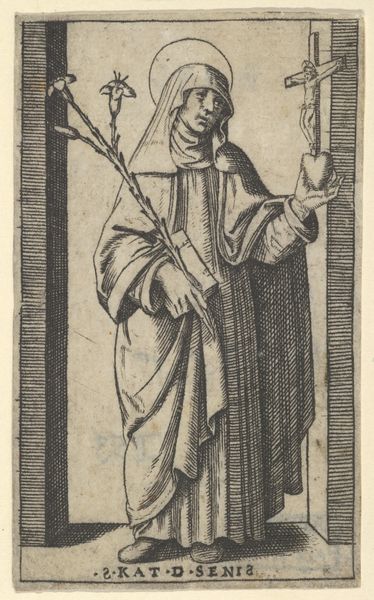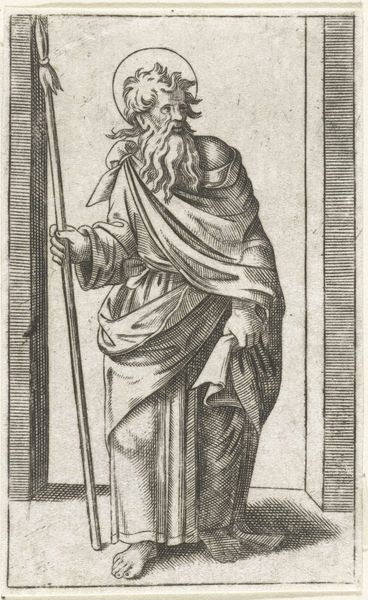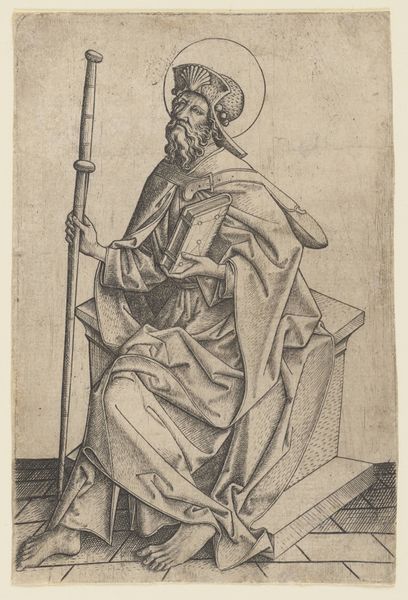
Stående soldat, frontalt set; hovedbeklædning med høj, tynd top; i h. hånd et spyd, på v. arm et skjold, som ses indefra 1576
0:00
0:00
print, woodcut
#
imaginative character sketch
#
light pencil work
# print
#
pencil sketch
#
cartoon sketch
#
personal sketchbook
#
pen-ink sketch
#
woodcut
#
sketchbook drawing
#
storyboard and sketchbook work
#
cartoon carciture
#
sketchbook art
Dimensions: 207 mm (height) x 138 mm (width) (bladmaal)
Curator: Looking at this print, I am immediately struck by how bizarre the soldier looks. So solemn, almost comical in his stance. Editor: We are currently viewing a woodcut made in 1576 by Melchior Lorck, a piece titled "Stående soldat, frontalt set; hovedbeklædning med høj, tynd top; i h. hånd et spyd, på v. arm et skjold, som ses indefra"—or, in English, "Standing soldier, frontal view; headdress with high, thin top; in right hand a spear, on left arm a shield, which is seen from the inside". Lorck was a fascinating figure, traveling extensively throughout Europe and the Ottoman Empire. This work is housed at the SMK, the National Gallery of Denmark. Curator: I can imagine Lorck sketching this soldier during one of his travels. There's a lightness to the execution. It’s as if he’s gently poking fun at military pretension. His spear seems ready to topple, and his peculiar, almost ladle-like, helmet. Is he heading off to war, or maybe just a costume ball? Editor: The humor, for me, is complicated by its context. Consider the fraught political landscape of 16th-century Europe—religious wars, imperial ambitions, rising nationalism. This "soldier" reflects broader anxieties around militarization and shifting power dynamics, and even interrogates representations of masculinity. Is he a heroic figure or a parody of one? Curator: I think it's both! That tension makes the piece so interesting. Look at the intricate details of his shield contrasted with the simplistic rendering of his face. It's like Lorck is saying, "Look how much we glorify war, even in its most absurd forms!" Editor: I read it as a commentary on the visual language of power itself. Who gets to define heroism, and what symbols do they use? And what is he defending when even his shield looks vulnerable and ornate. Curator: I like that—the vulnerable, ornate shield. Almost an admission of war’s theatrical absurdity. It has changed my perception entirely, and it also shows the genius behind the author, to have hidden different nuances for us to discuss. Editor: It's works like these that prove the art of any era is as valid in the current era because there's always going to be an emotional or cultural concept to connect the artwork and the human.
Comments
No comments
Be the first to comment and join the conversation on the ultimate creative platform.
